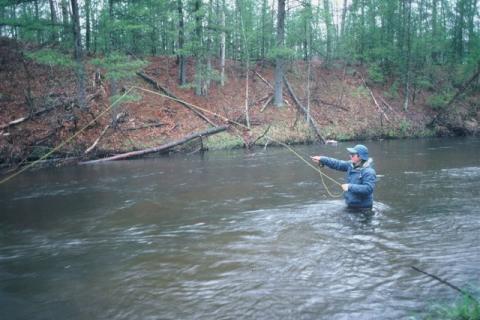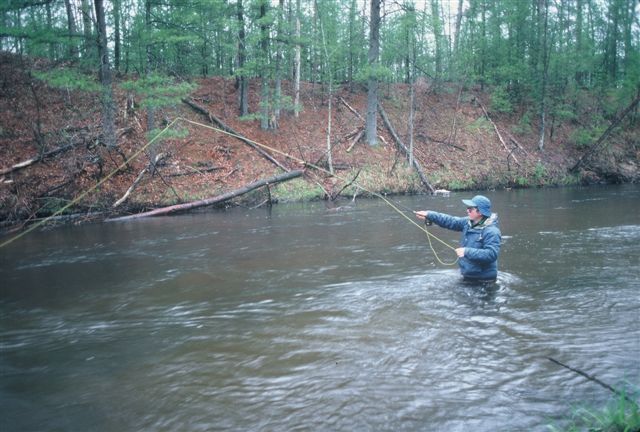
The lowly rock bass won’t win many popularity contests among anglers. These fish are not sleek and powerful like a landlocked striper. They don’t jump like a belligerent bass or streak through the currents like a rainbow trout
 |
| Panfish such as rock bass can be a fill-in for those days when fishing for other gamefish isn't effective. |
But despite their lack of credentials as a gamefish, these stocky little olive and brass-colored panfish are strangely appealing. Maybe their dependability is what makes them so attractive as a quarry. Rock bass can almost always be counted on as a fill-in for those days when other gamefish develop a case of lockjaw.
But don’t just relegate rock bass to the roll of fill-in when other species are not cooperating. Instead, try focusing occasionally on this quarry for its own value as a gamefish. The rock bass, also called “goggle eyes”, is a handsome fish in a rugged sort of way.
The fish’s Latin name, Ambloplites rupestris gives a clue to the habitat the rock bass prefers. Rupetris means “of the rocks.” Stone and rubble-covered rivers as well as some rocky lakes are prime rock bass fishing grounds.
Rock bass don’t grow large, and a 5-7 incher is typical. Studies have shown it takes six years for a rock bass to reach eight inches. A 12-ounce fish is definitely a trophy.
Rock bass can be caught with just about any angling method imaginable. I’ve even caught them when downrigging for stripers with large diving plugs that were almost as big as the rock bass were. That’s definitely not the ideal way to take this diminutive fish, though.
Ultralight spin tackle or a light fly rod are much better gear.
In lakes you can find rock bass in coves, around rubble and rock-strewn points, reefs and any areas where hard bottom is found. In rivers rock bass favor deep pools, eddies near shore, pockets behind bolders, ledges and shaded shoreline spots where they often hover within inches of the bank. Besides stones, rock bass also hang around logs, deadfalls and underwater stumps.
Lures—Top artificials for spin fishing include grubs with plastic twister tails, jigs, in-line spinners, banana-shaped wobblers and small spinnerbaits like the Beetlespin. Four pound test line is perfect, but go with six if you might latch onto some black bass as well as the targeted quarry.
Deliveries—Two things are vital for success with rock bass. The first is that your lure falls close to the shoreline if fish are holding near the banks. The second important point is to retrieve slowly and keep the offering near the bottom when fish are holed up in deeper water.
Live Bait Options—Natural bait works extremely well on rock bass. Hellgrammites, earthworms and two-inch long minnows are all excellent. Use them with a small bobber and split shot or two for weight. This is a great way to introduce a youngster to fishing.
Fly Fishing—Flies also take rock bass consistently. If fish are hovering near shore they’ll nab a small sponge rubber spider, deer hair bug or cork popper cast close to the bank. Allow it to rest then twitch the fly softly.
Use an 8-9 foot rod, 4-6 weight forward floating line and 4-6 pound tippet. If fish aren’t striking on top, go with small sub-surface offerings such as the Wooly Bugger, Montana Stone, Yuk Bug and streamers like the Zonker, Matuka or Clouser Minnow, sizes 4-10.
It would be hard to think of a more pleasurable way to spend a warm summer afternoon than wet-wading a cool, shaded stream casting small grubs, minnows or flies to willing rock bass. And if your son or daughter are free or a neighborhood kid wants to come along, take them too. This is a great fish to focus on when introducing youngsters to the sport of angling.
- 13567 views

